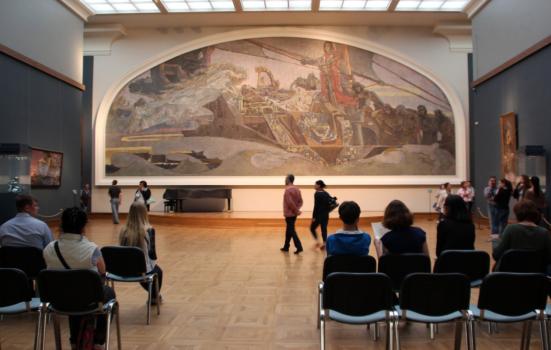The Association of Leading Visitor Attractions warns that amid pressures on household spending, providing value for money to visitors is more essential than ever.

Peggy and Marco Lachmann-Anke
Rising inflation and the cost-of-living crisis are set to put a damper on tourism in the UK in 2023, the Association of Leading Visitor Attractions (ALVA) has warned in a new report.
After the “grim period” caused by the Covid-19 pandemic, “it would be nice to think that 2023 will be an auspicious year”, with a resurgence of domestic and inbound tourism to pre-pandemic levels, the report said. But “in reality, 2023 looks set to be exceptionally tough”.
The primary deterrent for both incoming and domestic visitors in 2023 is expected to be the rising cost of living, it concludes, as concerns about Covid-19 wane and pandemic travel restrictions are eased in most major economies.
READ MORE:
- Visitor attractions face 'significant cost-of-living barrier'
- Attractions' visitor numbers fall by 70% in 'devastatingly hard year'
Consumer demand is at risk of diminishing “because of double-digit inflation eroding household spending power in a manner not seen for forty years,” the report said.
“Holidays will still be taken, and days out will still be had in 2023, but the importance of providing value for money to visitors has become more vital than ever.”
Risk of energy shortages
Exceptionally cold weather in Britain and Europe this winter would place additional strain on gas supplies already impacted by the war in Ukraine, the report warned.
“The public in many nations are already being encouraged to adapt their behaviour to reduce energy consumption, thereby helping to protect supplies for the winter ahead,” it said.
“In Britain the dialogue has mainly been about energy costs rather than energy consumption, but a particularly cold winter may scupper claims that no form of energy rationing, whether to heavy industrial users or domestic users, will be countenanced.”
If the cap on household and business energy bills announced earlier this month means that wholesale demand is not suppressed, “a shortfall in supply relative to demand will resolve itself through shortages”, affecting the entire hospitality and tourism sector.
Other factors anticipated to negatively affect the sector include concerns about public health, continuing global supply-chain disruption and acute labour shortages, which led to “a sector not able to deliver the customer service that visitors and travellers rightly expect”, in 2022, the report said.
Public funding for the tourism sector may also decline as government borrowing is set to increase. “Securing public funding for tourism is going to become tougher during the next 18 months”, the report warned.
Visitor number to remain depressed
“The amount of disposable income available for holiday trips, whether domestic or international, is set to be significantly squeezed over the next year,” the report found, with 76% of those surveyed by VisitBritain in August stating they felt the worst of the cost-of-living crisis was yet to come.
“There is little to no prospect of consumer confidence showing marked signs of recovery in the next few months, with a distinct possibility that new record lows could yet be witnessed,” the report found.
Although visits from inbound tourists are set to increase, “no world regions are expected to see outbound travel back to levels witnessed in 2019”.
Travel from North East and South East Asia is “not expected to reach even 40% of its 2019 volumes by the end of 2022”.
However, travel from the US is expected to pick up, in part thanks to the strength of the dollar relative to the pound. Travel from Australia and New Zealand, possible for the first time since 2020, is also expected to rebound strongly.
Domestic tourism is also likely to pick up, in part due to some visitors switching from overseas to domestic travel.
But many domestic visitors expressed concerns about the rising cost of living, the cost of fuel and the rising overall cost of holidays and leisure, as well as lingering concerns about catching Covid-19.




